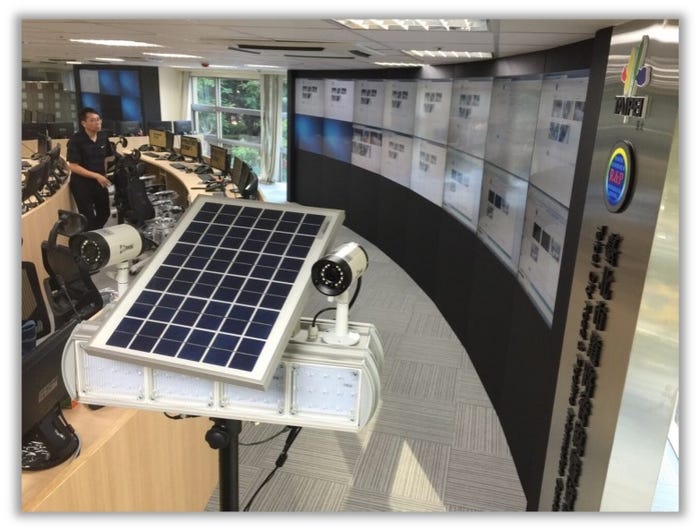Smart City Growth Has IoT Tech at the Core
As cities grow increasingly connected, IoT technologies are providing new ways of managing and monitoring data

The cities of the future are set to have IoT technologies at their core.
By 2025, smart city infrastructure is expected to provide more than 40% of all smart city income worldwide, according to Statista, while a recent report from Markets & Markets predicts global IoT in smart cities market will grow from $130.6 billion in 2021 to $312.2 billion by 2026.
This growth is driven by increasing population sizes and urbanization, as well as a push to maintain sustainable and economic growth as city sizes swell, and the rise of digitization in the wake of the pandemic.
“The pandemic was really what triggered it,” said David Ly, CEO of smart city tech company Iveda. “People showing up physically is no longer a necessity, and suddenly everyone is talking about smart deployments because our infrastructure needs to change for the new era of automation.”
“Advancements in connectivity infrastructure (such as broadband, cellular and LPWAN rollouts) played a critical role in building the foundation to ‘host’ smart city apps,” said Eleftheria Kouri, senior IoT analyst at Omdia. “Contribution from technology vendors was also catalytic for the uptake of smart city technologies. These companies have set up smart city divisions with technology and public sector experts to assist cities with their challenges and offer better quality of life to tourists and residents.”
Deploying IoT
To meet the new needs of smart city life, innovators are developing an increasing array of sensors and monitors to optimize and assess all aspects of daily life – from traffic to energy consumption and even public safety. This is where the importance of IoT and artificial intelligence (AI) technologies comes in, to gather the data needed to inform smart city design.
“It's one thing to talk about smart cities. But how do you connect all the dots? How do you automate certain tasks?” said Ly. “This is almost impossible without data, it’s critical. It informs everything from when something is needed, to how much investment is required.”
Collecting citywide data may seem a daunting task, and governing bodies also have to tread carefully when it comes to the privacy of residents. However, innovators are developing solutions that can gather up-to-date insights into a city’s behavior and movement, without jeopardizing privacy.
Establishing points of data collection also may initially seem problematic if a city’s design does not accommodate the infrastructure. However, solutions are being developed by companies such as Iveda that can be integrated into existing systems.
“You must start somewhere when building a smart city,” said Ly. “We have sensors that measure data on temperature, how fast the wind is blowing — but where do you put them? You don’t want to mount something new, which would mean more construction, more mess. We’re big on leveraging existing infrastructure.”
A prime example of this method can be seen in Iveda’s ongoing work in Taiwan, where the company is deploying its smart city technologies into existing light poles in the city. The smart poles are connected to the local network and can communicate with one another to improve security, asset operation and management. It also acts like a microgrid, providing power to mission-critical infrastructure when needed.

Credit: Iveda
“How we evolve an existing city is based on truly understanding how to leverage existing infrastructure,” said Ly. “You start with existing infrastructure, and you apply these sensors to begin understanding the working of a city and its inhabitants.”
“The magic behind this technology is that it is very focused on infrastructure that everybody understands,” he said. “It's viable for implementation. And there's a path that will extend to further development within a city before we even talk about smart buildings.”
What Does the Future Hold for Smart City Tech?
According to Ly, a significant driver in the uptake of smart city technologies is the push for sustainability, an industry focus he anticipates to continue.
“True environmental sustainability will require a smart city with proper IoT deployment,” Ly said. “That is the next big wave: IoT and sensors that can measure flow, consumption, and distribution of electricity, gas and water.
“IoT and digital transformation, when implemented properly, will be a great part of our sustainability throughout the world. Because it will provide the proper data to know how to act and when.”
As cities around the world look to get smarter about energy consumption and environmental monitoring, smart meter IoT devices are set to see increased deployment. According to a report from Insider Intelligence, utility companies will save $157 billion by 2035 by implementing smart meters, and companies including Cisco Systems, General Electric, IBM, Microsoft and Schneider Electric are already deploying smart grid solutions to manage emissions.
Aside from environmental drivers, smart cities are also expected to leverage a widening range of technologies to digitize all aspects of city life.
“In the future we expect to see technologies such as AI, digital twins, blockchain, augmented reality, cloud computing services to play a more important role in smart cities,” said Kouri. “Cities (at least the most technologically mature) will look for technologies that will allow them to better leverage their collected data and become more proactive and preventive.”
As data collection becomes more widespread, the culture and legislation around it will also see a change as operators grapple with issues such as privacy, as well as managing vast amounts of data.
“To unlock the real power of data and enable data exchanges between different smart city platforms and systems, there is a need to establish a legal framework that ensures that data is protected,” said Kouri. “Cybersecurity and technology vendors in collaboration with city authorities need to agree who will eventually own the data and ensure how it will remain protected.”
About the Author
You May Also Like








